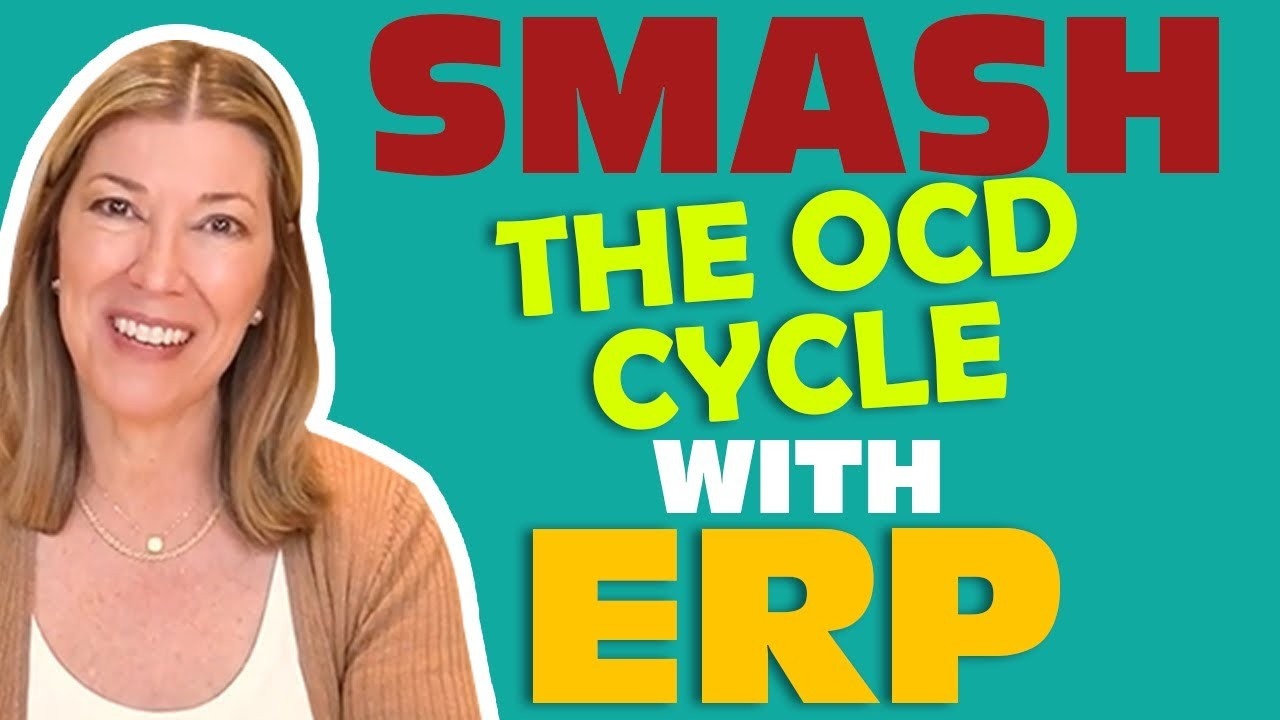
Smash the OCD Cycle with ERP
Do you ever find yourself experiencing thoughts or images that seem to pop into your head out of nowhere? It's a common human experience, but for individuals with OCD (Obsessive-Compulsive Disorder), these thoughts can become intrusive and distressing. In this blog post, we will explore the intricacies of the OCD cycle and how Exposure and Response Prevention (ERP) therapy can help individuals break free from its grip.
Understanding the OCD Cycle
OCD is characterized by the presence of repetitive and distressing thoughts, known as obsessions, and the subsequent behaviors or mental acts, known as compulsions, that individuals engage in to alleviate the anxiety or discomfort caused by these thoughts. The OCD cycle consists of several key stages:
-
Fear Trigger or Obsession: This initial stage can be triggered by internal thoughts, images, or sensations, or external factors such as specific objects or activities. These triggers can vary greatly among individuals.
-
Mental Misappraisal: At this stage, individuals with OCD make a mental error by attaching excessive meaning or significance to their triggers. They often perceive these triggers as dangerous or harmful.
-
Tension and Anxiety: As a result of the misappraisal, tension, anxiety, and discomfort build up, intensifying the need to seek relief.
-
Desire to Seek Safety: In response to the growing discomfort, individuals feel an immediate urge to engage in compulsive behaviors or rituals to alleviate their anxiety and distress.
-
Compulsive Behaviors: Compulsions can be physical (e.g., checking, handwashing) or mental (e.g., rumination, mental checking). These behaviors are aimed at reducing anxiety but ultimately reinforce the OCD cycle.
-
Short-term Benefit: Compulsions provide short-term relief from anxiety, which reinforces the need to continue engaging in them.
-
Negative Emotions: Individuals with OCD often experience negative emotions such as guilt, shame, depression, anger, or frustration due to their obsessions and compulsions.
-
Increased Distress: These negative emotions further reduce the tolerance for the original obsession or fear trigger, perpetuating the OCD cycle.

Are you struggling with OCD or Pure O? Do obsessive thoughts, rituals, and compulsions take over your life? Has it been hard to find a specialist to help you?
If you want to get your life back from OCD or Pure O,
this course is for you.
Breaking the OCD Cycle with ERP Therapy
Exposure and Response Prevention (ERP) is considered the gold standard treatment for OCD. ERP helps individuals disrupt the OCD cycle and regain control over their thoughts and behaviors. Let's explore how ERP works within the context of the OCD cycle:
-
Exposure to the Trigger: ERP starts by deliberately exposing individuals to their original OCD triggers, whether they are thoughts, sensations, or external stimuli.
-
Change in Appraisal: Instead of interpreting the trigger as dangerous or harmful, individuals are encouraged to recognize it as an OCD-related thought or sensation. This step begins to separate them from the OCD itself.
-
Tension and Anxiety: Despite recognizing the trigger as OCD-related, individuals still experience anxiety. This anxiety is essential for the brain to learn that the trigger is not a genuine threat.
-
Desire to Seek Safety: Initially, the urge to seek safety and engage in compulsive behaviors remains, but ERP prepares individuals to resist these urges.
-
Response Prevention: During ERP, individuals actively practice response prevention, which means tolerating discomfort and anxiety without engaging in compulsions or avoidance behaviors.
-
Establishing New Neural Pathways: By not performing compulsions, individuals' brains begin to form new neural pathways that associate the trigger with safety.
-
Positive Emotions: After successfully completing ERP exposures, individuals often experience positive emotions, such as pride and accomplishment.
-
Increased Tolerance: Over time and with repeated ERP sessions, individuals build increased tolerance for their obsessions and fear triggers, weakening the OCD cycle.
Obsessive-Compulsive Disorder can be a debilitating condition, but with the right treatment approach, individuals can regain control of their lives. ERP therapy offers a structured and evidence-based method to break the vicious cycle of obsessions and compulsions. By understanding the mechanics of the OCD cycle and actively engaging in ERP, individuals can create new neural pathways, increase their tolerance for discomfort, and ultimately break free from the grip of OCD. If you or someone you know is struggling with OCD, consider seeking help from a qualified therapist who specializes in ERP therapy.
Let's Keep in Touch
Subscribe to My Newsletter
We hate SPAM. We will never sell your information, for any reason.







